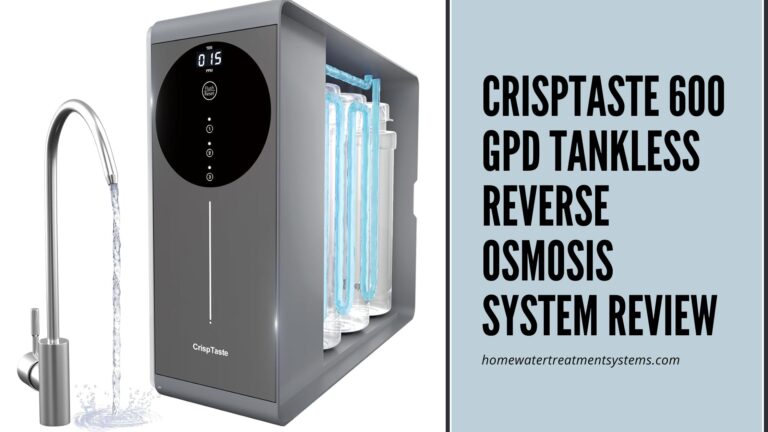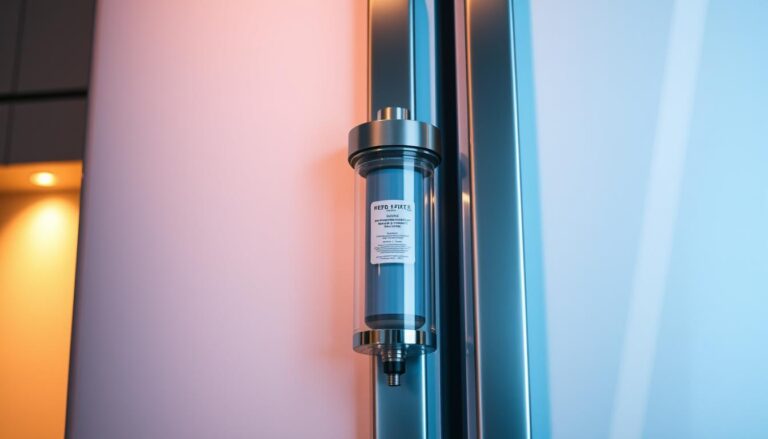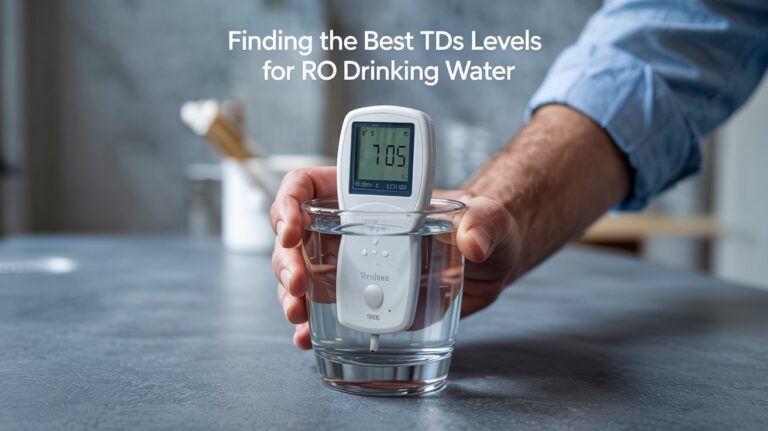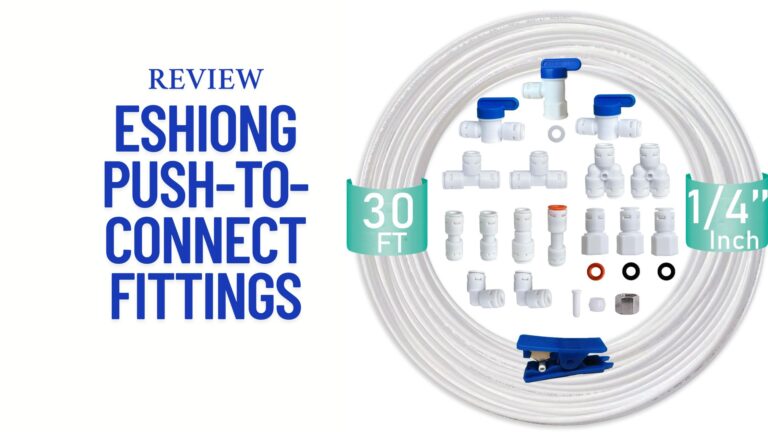Reverse Osmosis at Home: A Real-Life Success Story
Did you know that millions of people worldwide drink contaminated water every day? The good news is that top home reverse osmosis systems are changing lives by providing clean drinking water.
A family in the United States recently installed a home reverse osmosis system and saw a significant improvement in their drinking water quality. They reported a noticeable difference in the taste and odor, making their drinking water safer and more enjoyable.
With the increasing awareness of water quality issues, many are turning to best home reverse osmosis systems for a reliable solution. These systems are designed to remove impurities and contaminants, providing peace of mind for families.
Key Takeaways
- Installing a home reverse osmosis system can significantly improve drinking water quality.
- Top home reverse osmosis systems remove a wide range of contaminants.
- Families report improved taste and odor after installation.
- Best home reverse osmosis systems provide a reliable solution for clean drinking water.
- These systems are a cost-effective way to ensure access to safe drinking water.
Our Family’s Water Quality Crisis
The moment we tested our tap water, we knew we had a serious problem on our hands. The results were alarming, and it became clear that our family’s health was at risk due to the poor quality of our drinking water.
Initial Water Testing Results
Our initial water test revealed a concerning level of contaminants, including heavy metals and pesticides. The test results showed that our tap water contained:
- High levels of lead
- Presence of chlorine and chloramines
- Various volatile organic compounds (VOCs)
These findings were a wake-up call, prompting us to seek a reliable solution for clean drinking water.
Health and Taste Concerns That Prompted Action
The taste and odor of our tap water were unpleasant, but more concerning were the potential health implications. With young children in the household, we were particularly worried about the long-term effects of consuming contaminated water. We began researching home water filtration systems and discovered that residential reverse osmosis systems were among the most effective solutions. Although the initial investment in an affordable home reverse osmosis system seemed significant, we knew it was crucial for safeguarding our family’s health.
After understanding the severity of our water quality crisis, we were determined to find a solution that would provide us with clean, safe drinking water. This realization marked the beginning of our journey toward installing a home reverse osmosis system.
Understanding Home Reverse Osmosis Systems
Understanding the technology behind home reverse osmosis systems is crucial for making an informed decision about your water filtration needs.
How Reverse Osmosis Technology Works
Reverse osmosis is a water purification process that uses a semi-permeable membrane to remove impurities from water. By applying pressure to the water, it forces the water through the membrane, filtering out contaminants and resulting in clean drinking water. This process is effective in removing a wide range of impurities, including dissolved solids, bacteria, and viruses.
Benefits Over Other Filtration Methods
Advanced home reverse osmosis systems offer several benefits over other filtration methods. They are highly effective in removing a broad spectrum of contaminants, improving the taste and odor of water, and are relatively low maintenance compared to other systems.
| Filtration Method | Effectiveness | Maintenance |
|---|---|---|
| Reverse Osmosis | High | Low |
| Activated Carbon | Medium | Medium |
| UV Light | High (against bacteria and viruses) | Low |
By choosing a high-quality home reverse osmosis system, households can enjoy cleaner, safer drinking water, enhancing their overall health and well-being.
Our Journey Researching Water Filtration Options
As we embarked on our journey to improve our home’s water quality, we were faced with a myriad of water filtration options. With so many choices available, it was crucial to understand the different technologies and their effectiveness in purifying water.
Comparing Different Filtration Technologies
Our research began with comparing different home water filtration systems, including activated carbon filters, ultraviolet (UV) light purifiers, and reverse osmosis systems. We created a comparison table to better understand the strengths and weaknesses of each technology.
| Filtration Technology | Effectiveness | Maintenance Cost |
|---|---|---|
| Activated Carbon | Removes chlorine and improves taste | Low |
| UV Light Purifiers | Effective against bacteria and viruses | Medium |
| Reverse Osmosis | Removes dissolved solids and heavy metals | High |
After analyzing the table, it became clear that while each technology had its benefits, residential reverse osmosis systems offered the most comprehensive solution for our water quality concerns.
Why We Chose Reverse Osmosis
We decided on a reverse osmosis system for several reasons. Firstly, its ability to remove a wide range of contaminants, including dissolved solids and heavy metals, was unmatched by other technologies. Secondly, despite the higher maintenance cost, the long-term benefits and peace of mind it provided were invaluable.
Our research also revealed that some of the best home reverse osmosis systems are designed with user-friendly features and efficient filtration processes, making them a practical choice for homeowners.
Selecting From Top Home Reverse Osmosis Systems
We evaluated several high-quality home reverse osmosis systems before making our final decision. The process involved identifying key features that mattered most to us and comparing top brands and models.
Key Features We Prioritized
When selecting a home reverse osmosis system, we considered several critical factors. These included:
- Filtration Stages: The number of stages and their effectiveness in removing contaminants.
- Water Production Rate: How much clean water the system could produce daily.
- Maintenance Requirements: Ease of filter replacement and system maintenance.
- Certifications and Compliance: Ensuring the system met or exceeded relevant water quality standards.
By focusing on these aspects, we were able to narrow down our options to the most suitable systems.
Comparing Top Brands and Models
We compared several top brands and models, evaluating their features, performance, and customer reviews. Some of the leading brands we considered included:
| Brand | Model | Filtration Stages | Water Production Rate |
|---|---|---|---|
| Aquasana | Aquasana 3-Stage | 3 | 75 GPD |
| ZeroWater | ZeroWater ZD-018 | 5 | 18 GPD |
| WaterChef | WaterChef U9000 | 5 | 90 GPD |
This comparison helped us understand the strengths and weaknesses of each system.
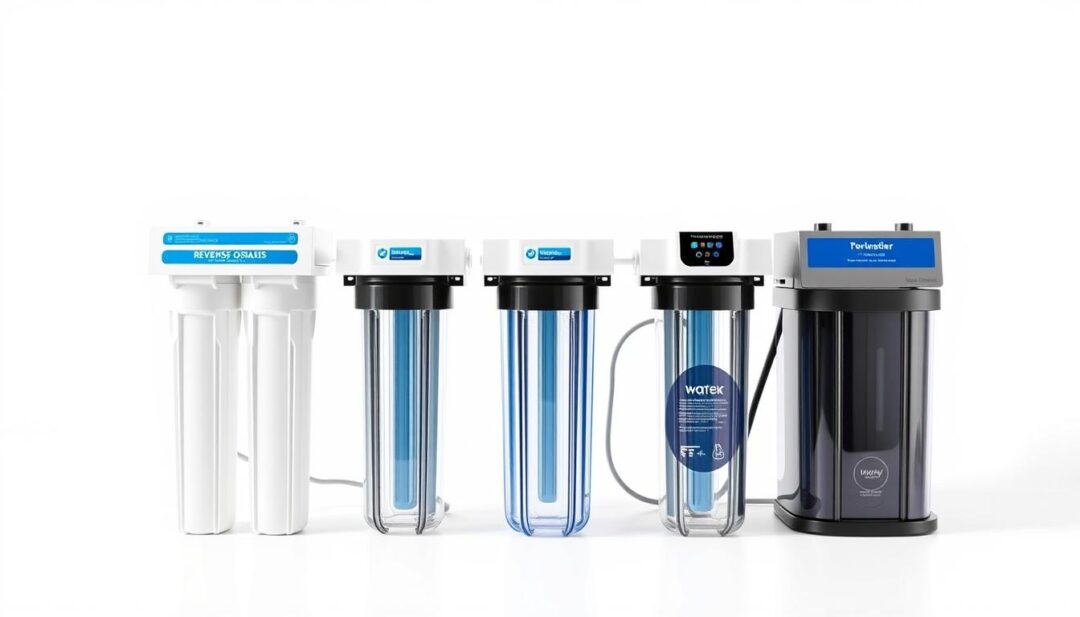
Our Final System Selection
After careful consideration, we selected the WaterChef U9000 for its superior filtration capabilities, high water production rate, and ease of maintenance. This system met all our requirements and provided the best overall value.
Installation Day: Our Experience
As we prepared for installation day, we couldn’t help but feel a mix of excitement and apprehension about our new home reverse osmosis system. The anticipation of having cleaner drinking water was tempered by concerns about the installation process itself.
DIY vs. Professional Installation Decision
One of the first decisions we had to make was whether to opt for a DIY installation or hire a professional. We weighed the pros and cons of each approach, considering factors such as cost, complexity, and our own technical expertise. Ultimately, we decided to hire a professional to ensure a smooth and correct installation of our residential reverse osmosis system.
Step-by-Step Installation Process
The installation process began with assessing our kitchen’s plumbing setup to determine the best location for the new system. Our installer then proceeded to connect the reverse osmosis system to the cold water line under the sink, followed by installing a dedicated faucet for dispensing purified water.
The next steps involved configuring the system’s filters and membrane, ensuring all connections were secure and leak-free. The entire process took a few hours, during which our installer provided valuable insights into the system’s operation and maintenance.
Initial Setup Challenges
While the installation was largely straightforward, we encountered a minor issue with the faucet’s compatibility with our sink’s configuration. Our installer was able to adapt the setup to fit our needs, demonstrating the importance of professional expertise in overcoming unexpected challenges.
With the system installed and tested, we were eager to experience the benefits of our new affordable home reverse osmosis system. The initial setup challenges were quickly forgotten as we looked forward to enjoying cleaner, healthier drinking water.
First Week With Our Home Reverse Osmosis System
Our experience with the home reverse osmosis system during the first week was nothing short of remarkable. As we began to use the system, we were eager to see the improvements it would bring to our drinking water.
Immediate Water Quality Improvements
The most noticeable change was in the taste and clarity of our water. With our home water filtration systems, the difference was like night and day. The water tasted fresher, and it was clear that the system was effectively removing impurities.
We were particularly impressed with how our best home reverse osmosis systems handled the task of purifying our water. The system’s ability to remove a wide range of contaminants was evident in the quality of the water it produced.
Family’s First Impressions
Our family was thrilled with the new water quality. The kids were excited to drink more water because it tasted so much better. My wife and I were relieved knowing that our family was consuming clean and safe drinking water.
The overall reaction was positive, with everyone agreeing that the top home reverse osmosis systems were worth the investment.
Adjusting to the New System
As with any new system, there was a bit of an adjustment period. We had to get used to the new taste and the process of maintaining the system. However, the instructions provided were clear, and the maintenance requirements were manageable.
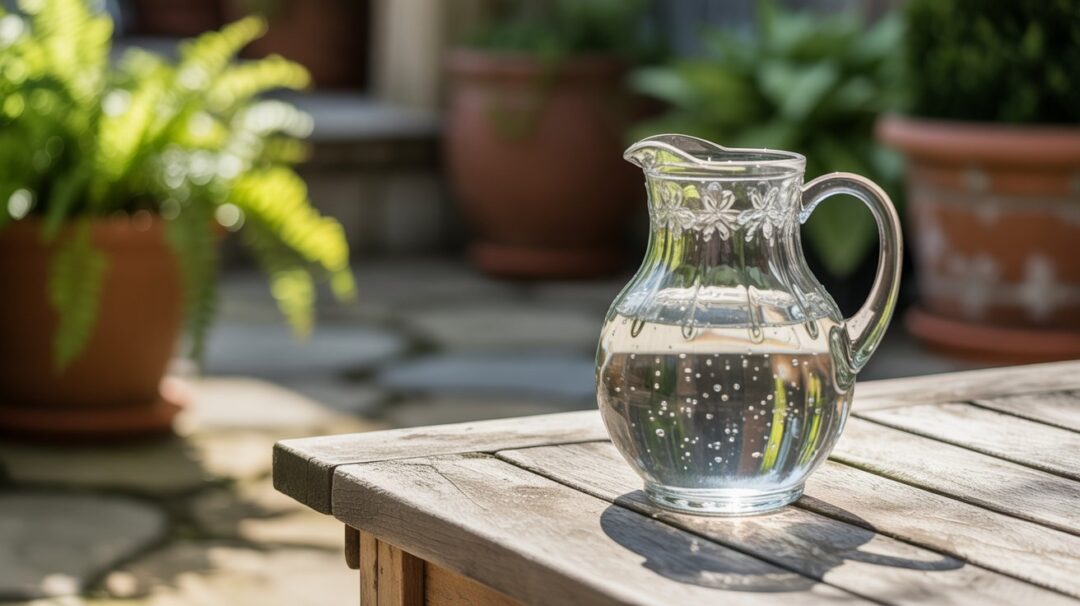
Overall, the first week with our home reverse osmosis system was a success. We were happy with the immediate improvements in water quality and were looking forward to the long-term benefits.
Before and After: Measurable Results
With our home reverse osmosis system in place, we conducted thorough tests to assess its effectiveness. The results were nothing short of impressive, showcasing significant improvements in our water quality.
Water Quality Test Comparisons
Our initial water testing revealed a range of contaminants and impurities. After installing the reverse osmosis system, we repeated the tests to compare the results. The differences were striking.
Contaminant Reduction Percentages
| Contaminant | Before RO System | After RO System | Reduction Percentage |
|---|---|---|---|
| Lead | 0.015 mg/L | 0.001 mg/L | 93.3% |
| Chlorine | 1.2 mg/L | 0.1 mg/L | 91.7% |
| Total Dissolved Solids (TDS) | 250 mg/L | 50 mg/L | 80% |
pH and Mineral Content Changes
The reverse osmosis system also affected the pH level and mineral content of our water. Initially, our water had a pH of 7.2 and a relatively high mineral content. Post-installation, the pH stabilized at 7.0, and the mineral content decreased, making the water softer and more palatable.
Taste and Clarity Differences
The most immediate and noticeable difference was in the taste and clarity of our water. The reverse osmosis system removed impurities and minerals that caused unpleasant tastes and odors, resulting in crystal-clear water that was a pleasure to drink.
Our experience with the home reverse osmosis system has been overwhelmingly positive, with significant improvements in water quality, taste, and clarity. These measurable results have reinforced our decision to invest in this advanced water filtration technology.
Financial Impact Analysis
Our experience with installing a home reverse osmosis system taught us that understanding the financial implications is crucial. While the initial investment might seem significant, the long-term benefits and savings make it a worthwhile decision.
Costs of Initial System and Installation
The initial cost of a home reverse osmosis system can vary widely, depending on the brand, model, and features. On average, a quality residential reverse osmosis system can cost between $300 to $600. Installation costs can add another $100 to $300, depending on whether you choose DIY or professional installation. While this might seem like a lot upfront, it’s essential to consider the long-term savings.
Ongoing Maintenance Expenses
Maintenance is a critical aspect of owning a home water filtration system. Filters typically need to be replaced every 6 to 12 months, at a cost of $50 to $100 per year. Some systems may require more frequent replacements or additional maintenance tasks, so it’s crucial to factor these costs into your budget.
Savings on Bottled Water and Other Alternatives
One of the most significant advantages of an affordable home reverse osmosis system is the savings on bottled water. By having clean drinking water at home, we reduced our reliance on bottled water, saving us around $50 to $100 per month. Additionally, using a home reverse osmosis system can extend the life of household appliances by reducing scale buildup, potentially saving hundreds of dollars in repair and replacement costs.
Overall, while there are initial and ongoing costs associated with a home reverse osmosis system, the long-term savings and health benefits make it a valuable investment for any homeowner. By choosing an affordable home reverse osmosis system, families can enjoy clean drinking water while also protecting their budget.
Six Months Later: Long-Term Benefits We’ve Experienced
Six months into using our reverse osmosis system, we’re seeing the long-term benefits that we had hoped for, from healthier drinking water to appliance protection. Our family’s experience has been a positive one, with improvements in health, household appliances, and a reduced environmental footprint.
Health Improvements in Our Family
The most significant benefit we’ve observed is the improvement in our family’s health. With cleaner drinking water, we’ve noticed a reduction in instances of waterborne illnesses. The reverse osmosis system has removed contaminants and impurities, providing us with peace of mind.
Our children are drinking more water than ever, thanks to the improved taste and quality. This has been a significant change, as previously they were hesitant to drink tap water due to its taste and odor. Now, they enjoy drinking water, which is a huge win for us as parents.
Household Appliance Protection
Another benefit we’ve experienced is the protection of our household appliances. The reverse osmosis system has reduced the mineral buildup in our appliances, potentially extending their lifespan. This is a significant cost-saving benefit, as replacing appliances can be expensive.
| Appliance | Pre-RO System Condition | Post-RO System Condition |
|---|---|---|
| Coffee Maker | Frequent scaling | No scaling issues |
| Dishwasher | Regular maintenance required | Reduced maintenance needs |
| Water Heater | Mineral buildup | Less mineral buildup |
Environmental Impact of Our Decision
We’ve also seen a positive environmental impact since installing the home reverse osmosis system. By having clean drinking water at home, we’ve significantly reduced our reliance on bottled water. This reduction has led to less plastic waste, contributing to a more sustainable lifestyle.
Our decision to switch to a home reverse osmosis system has been beneficial for our health, household, and the environment. We’re pleased with the results and would highly recommend considering a top home reverse osmosis system for those looking to improve their drinking water quality.
Conclusion: Why We Recommend Home Reverse Osmosis
Our experience with home reverse osmosis systems has been transformative, providing cleaner, healthier drinking water for our family. By removing contaminants and dissolved solids, these systems have improved the taste and quality of our water, making it a pleasure to drink.
Advanced home reverse osmosis systems, like the one we installed, offer a comprehensive solution for households seeking high-quality drinking water. With benefits extending beyond just drinking water, such as protecting household appliances and reducing environmental impact, high-quality home reverse osmosis systems are a worthwhile investment for any homeowner.
We highly recommend considering a home reverse osmosis system for your household. Not only will you be ensuring access to clean drinking water, but you’ll also be contributing to a healthier environment and potentially reducing your reliance on bottled water.
Frequently Asked Questions
What is a home reverse osmosis system?
A home reverse osmosis system is a water filtration system that uses a semipermeable membrane to remove impurities and contaminants from drinking water, producing clean and safe water for consumption.
How does a home reverse osmosis system work?
A home reverse osmosis system works by applying pressure to force water through a semipermeable membrane, which filters out impurities and contaminants, resulting in clean drinking water.
What are the benefits of using a home reverse osmosis system?
The benefits of using a home reverse osmosis system include improved water taste and clarity, removal of contaminants and impurities, and reduced risk of waterborne illnesses.
Are home reverse osmosis systems effective in removing all contaminants?
While home reverse osmosis systems are highly effective in removing many contaminants, they may not remove all contaminants, such as certain dissolved gases or some viruses. However, they can remove up to 99% of many contaminants, including lead, chlorine, and nitrates.
How often do I need to replace the filters in my home reverse osmosis system?
The frequency of replacing filters in a home reverse osmosis system depends on the manufacturer’s recommendations and the quality of the water being filtered. Typically, pre-filters need to be replaced every 6–12 months, while the reverse osmosis membrane may need to be replaced every 2–3 years.
Can I install a home reverse osmosis system myself?
While it is possible to install a home reverse osmosis system yourself, it is recommended to hire a professional to ensure proper installation and to avoid any potential leaks or other issues.
How much does a home reverse osmosis system cost?
The cost of a home reverse osmosis system can vary depending on the brand, model, and features, but on average, it can range from $200 to $1,000 or more, including installation costs.
Are there any ongoing maintenance expenses associated with home reverse osmosis systems?
Yes, there are ongoing maintenance expenses associated with home reverse osmosis systems, including replacing filters and membranes, which can range from $50 to $200 per year.
Can a home reverse osmosis system help reduce my environmental impact?
Yes, a home reverse osmosis system can help reduce your environmental impact by reducing the need for bottled water, which can help minimize plastic waste.
Are high-quality home reverse osmosis systems worth the investment?
Yes, high-quality home reverse osmosis systems are worth the investment, as they can provide clean and safe drinking water, improve the taste and clarity of water, and reduce the risk of waterborne illnesses.
What are the best home reverse osmosis systems available in the market?
Some of the best home reverse osmosis systems available in the market include those from reputable brands such as WaterChef, iSpring, and Culligan, which offer advanced features and high-quality filtration.


